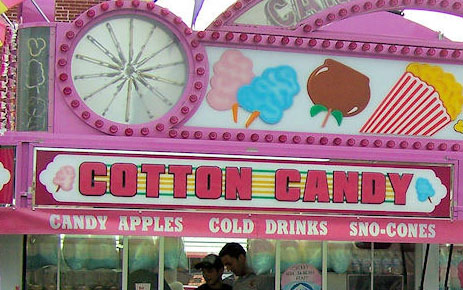
May 12, 2010 More on helping students practice decision-making, compromise, and consensus through experiential activities -A funny story:
Last week I mentioned my favorite way to divide a group into teams using a “Which One?” scenario where partners practice compromise/decision-making. After reading the last entry my colleague Kristen reminded me to share my funny “success” story from using this method with students in an elementary school:
I was working with a 2nd grade classroom in Middleton, Wisconsin, helping a teacher implement community building activities in her classroom. Early in the session I used the “partner choice/which one” scenario for dividing the class up into teams in preparation for a game of Play dough Pictionary (see November 23rd entry).

I had them imagine they were at the circus and seeking out cotton candy. After waiting in line for the cotton candy they found that there was only one blue and one pink cotton candy left at the stand. The students had to decide who would get which one… One pair of students started arguing rather intensely about who should get the blue. Everyone else was ready to move on.
Instead of intervening directly with the students who were arguing. I decided to get everyone’s attention for a moment and ask a pair of students who had decided to share how they came to their decision to the group. One of the students shared: “Well, we both wanted the pink cotton candy, but I am okay with blue AND I wanted to find out what you are going to have us do with those spots and the play dough, so I let her have the pink one.” Immediately the undecided pair looked at each other and quickly came to agreement.
At that point the student’s teacher and I took a few minutes to talk about the meaning of “compromise” and why we sometimes let go of our first choice to make things work for the group and ourselves. We moved on to the other cooperative activities we had planned for the day and forgot about the conversation.
That evening the teacher called me to tell me that a few hours after I left the students were lining up for lunch when a squabble erupted about who’s turn it was to lead the line to the cafeteria. Just as she was going to intervene, a little voice from the back of the line said: “You know guys, this is just like the cotton candy. We all just want to get to lunch.” This ended the squabble immediately- without adult intervention.
Sometimes the simple exercises we engage students in have more of an effect than we realize. Over my years working with groups I have noticed that some of the best “successes” in teaching come by accident; or the most profound lessons can come from the seemingly “less important” activities you engage a group in rather than the intense problem- solving lesson you carefully designed for the group. Think about those “simple” opportunities you can weave into the day to day activities you plan for your group that practice these important life skills…
Reference: Tips & Tools for the Art of Experiential Group Facilitation. Jennifer Stanchfield. 2007: Wood ‘N’ Barnes Publishing.



No Comments